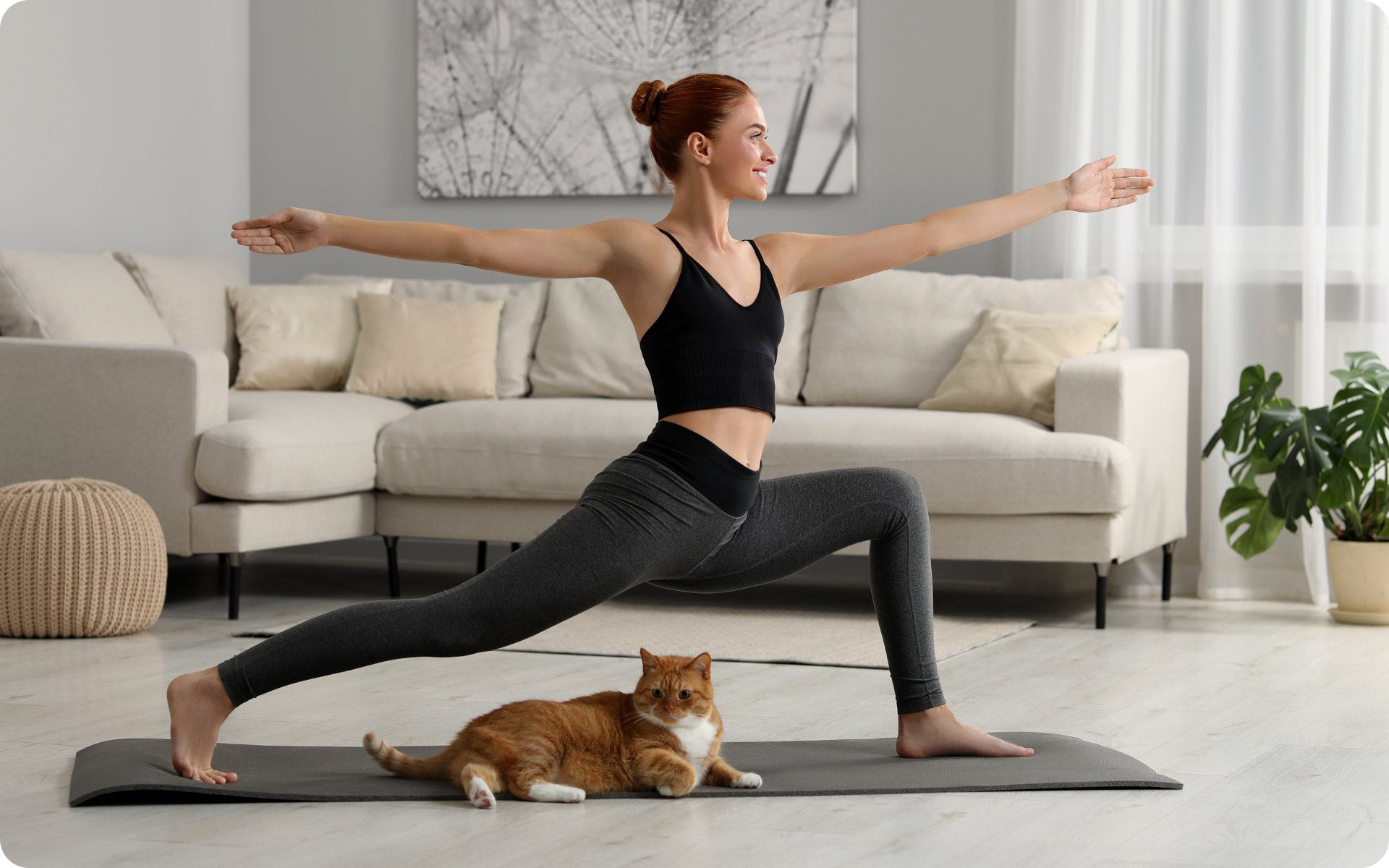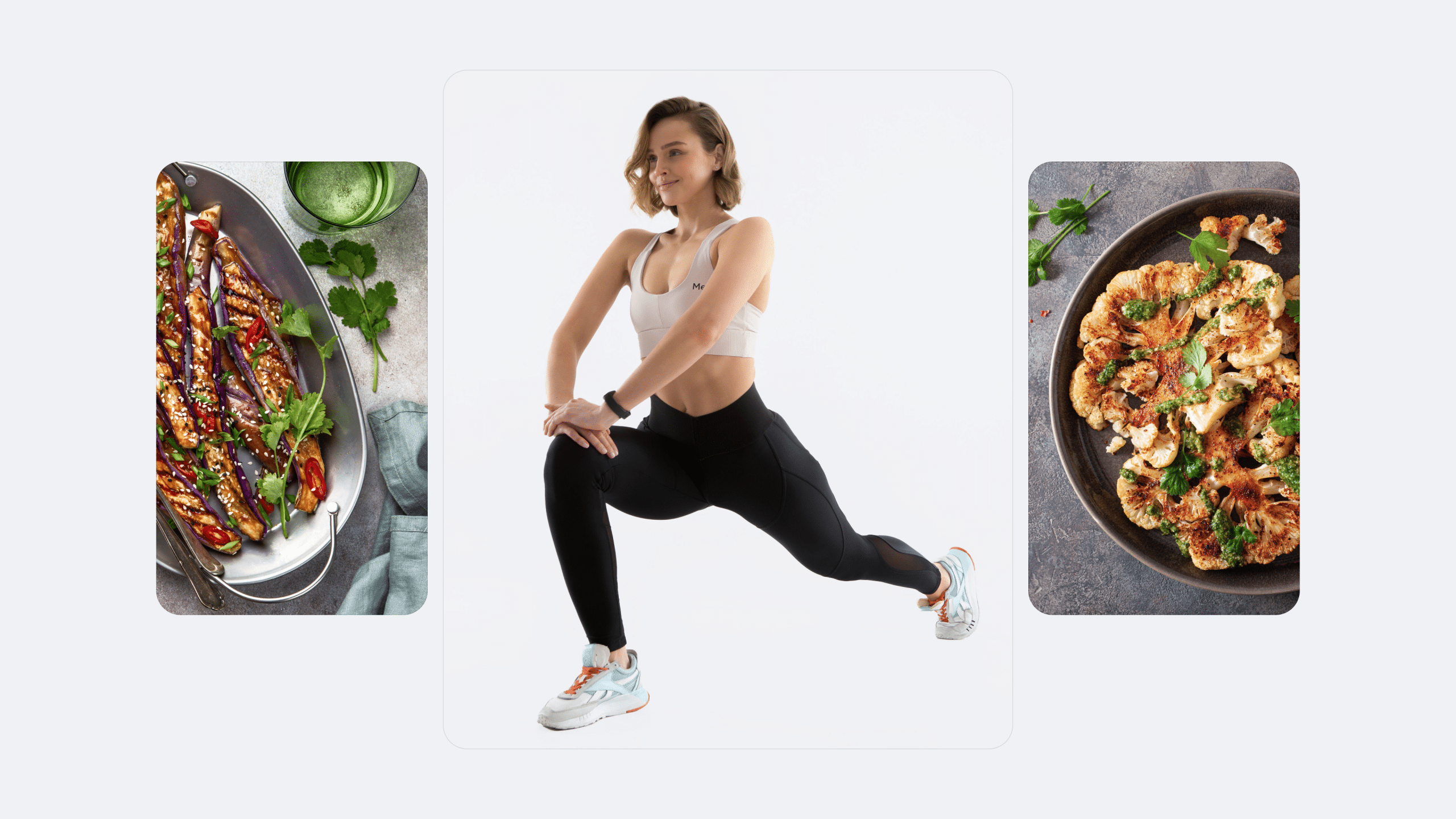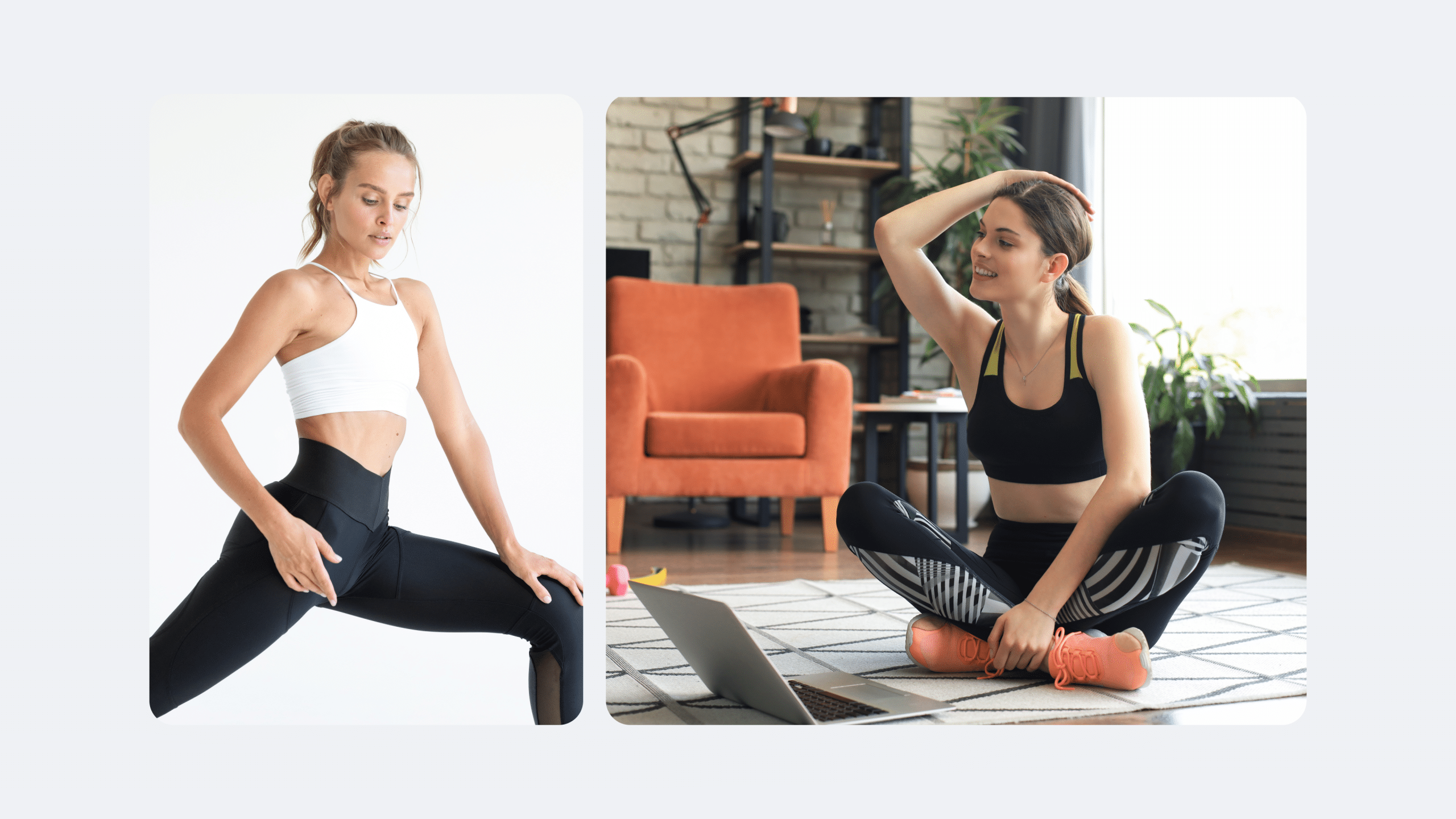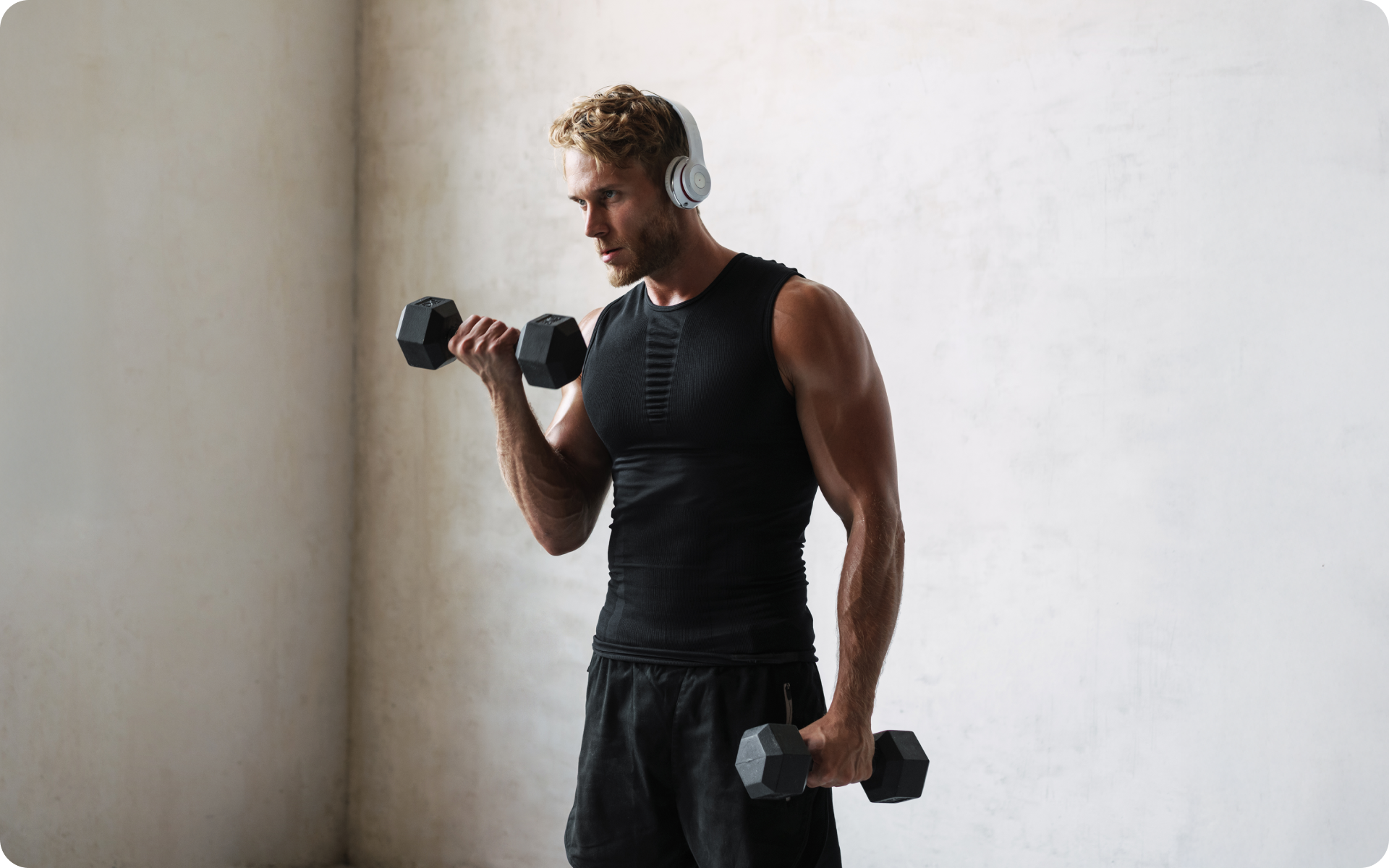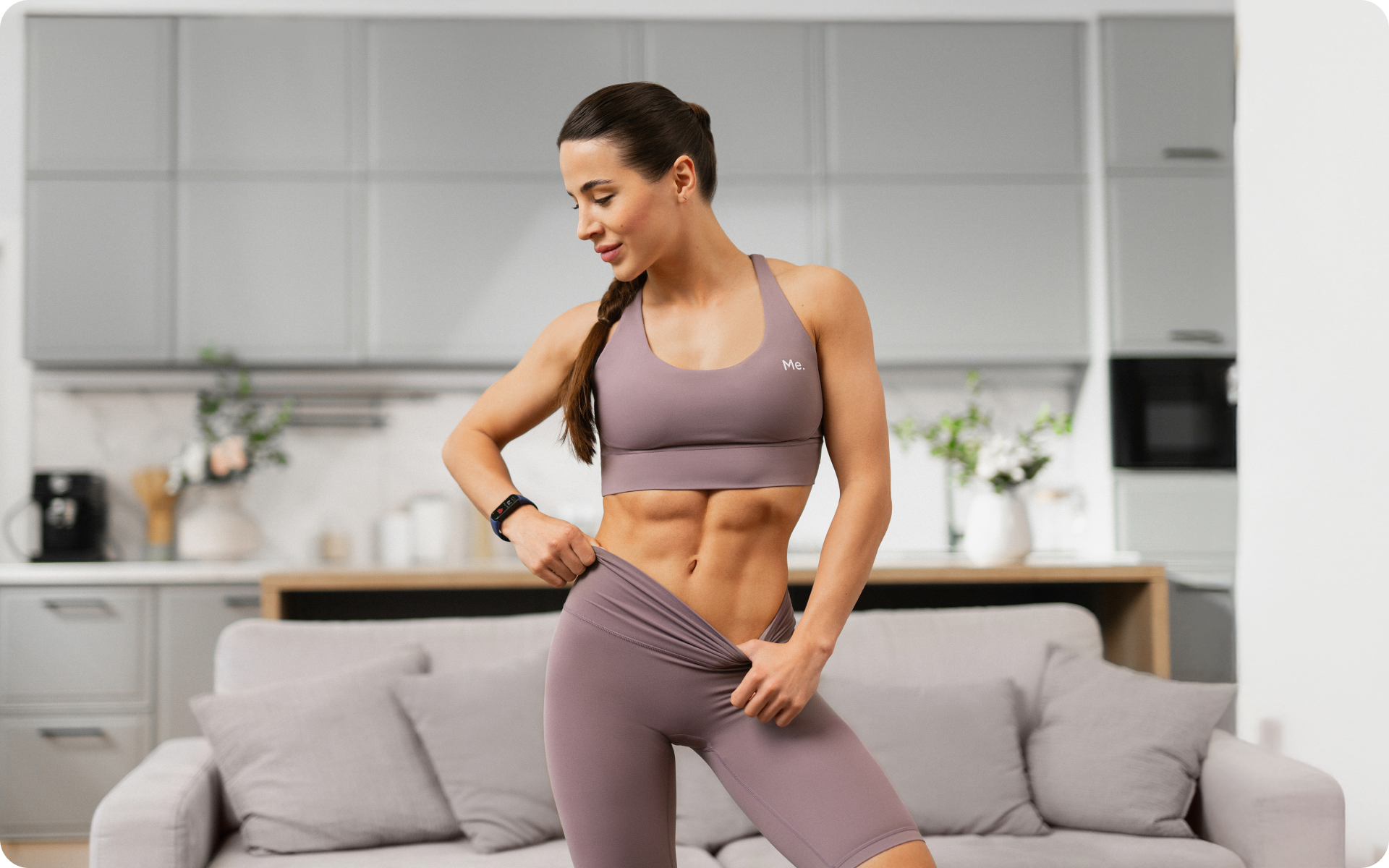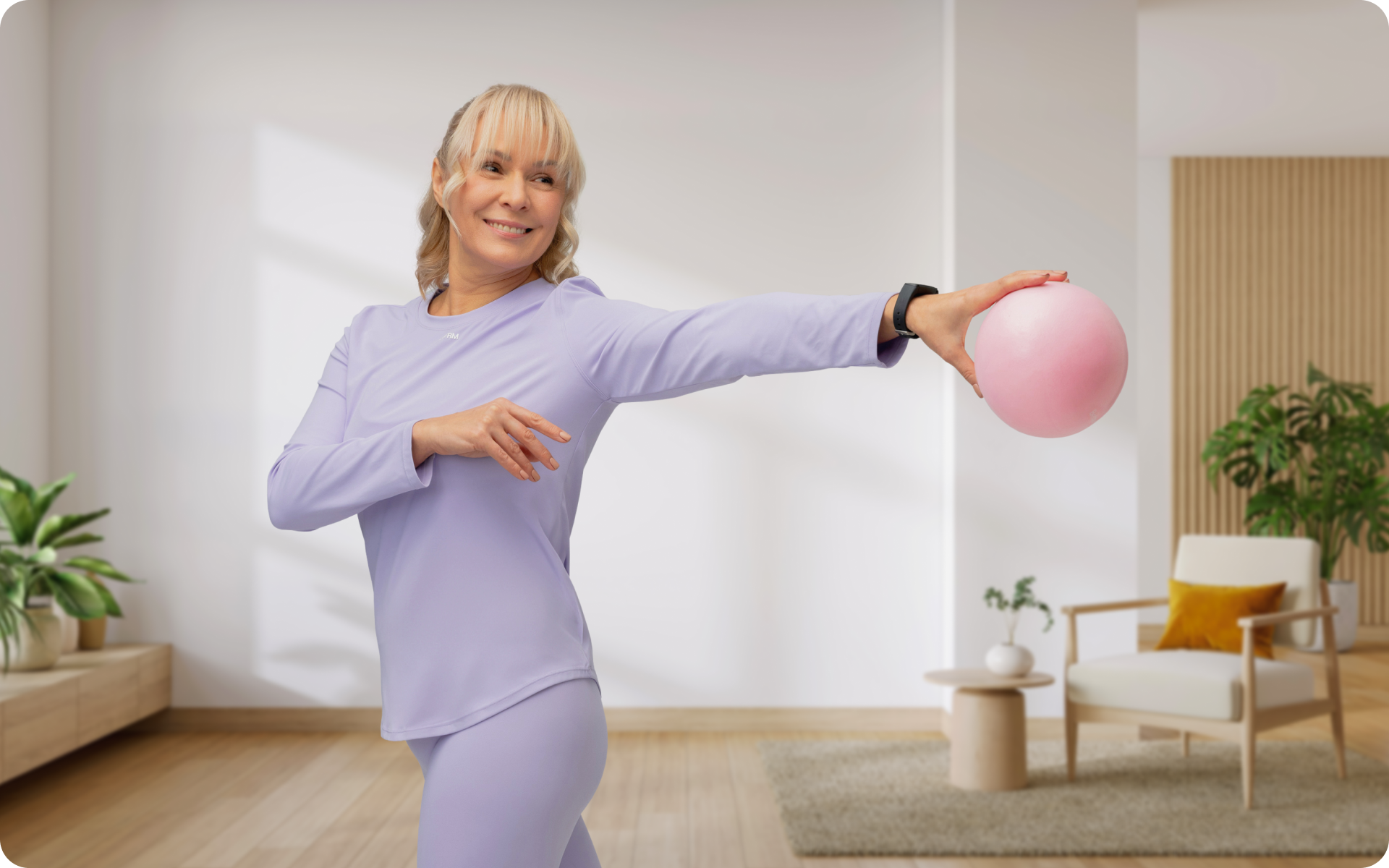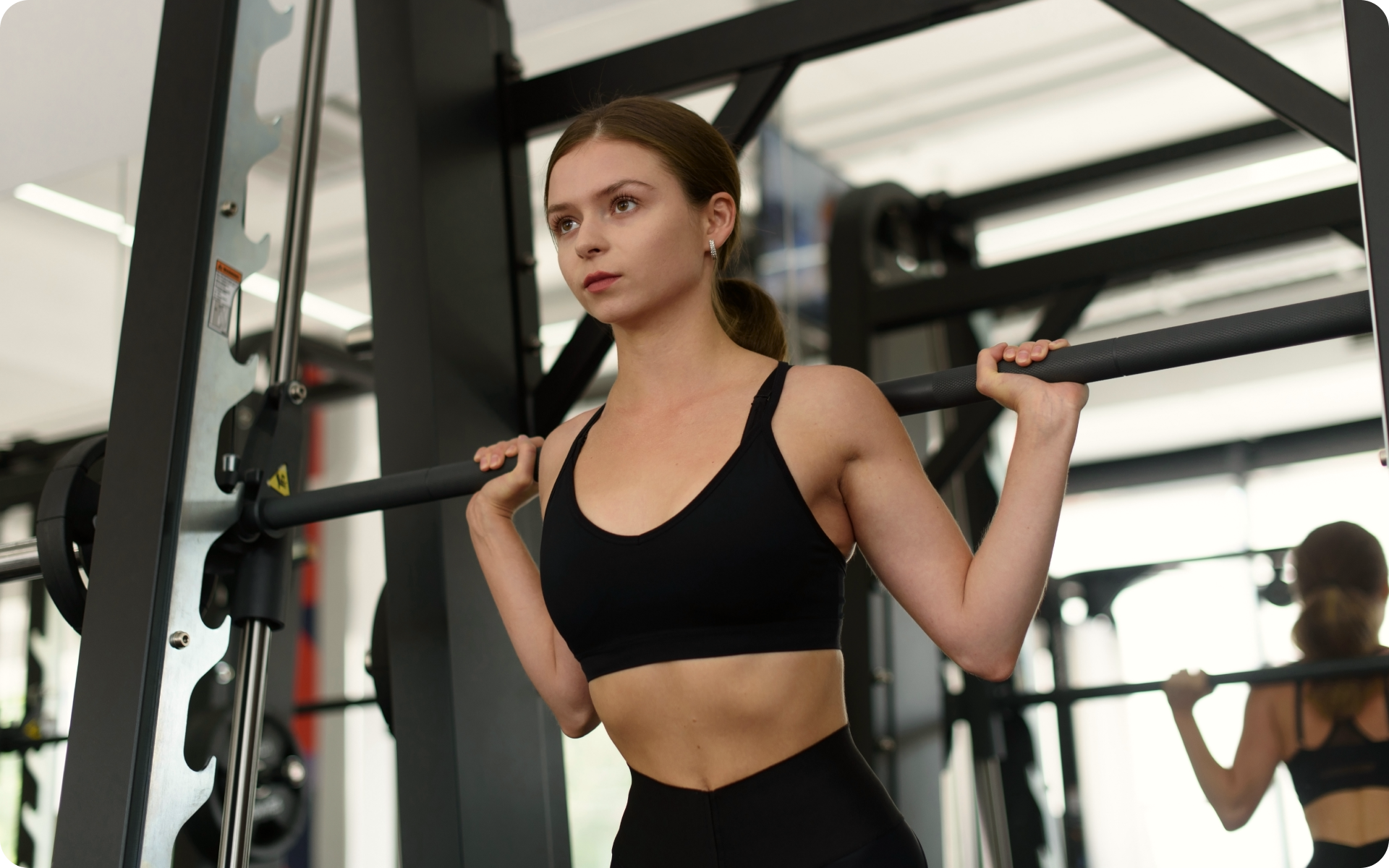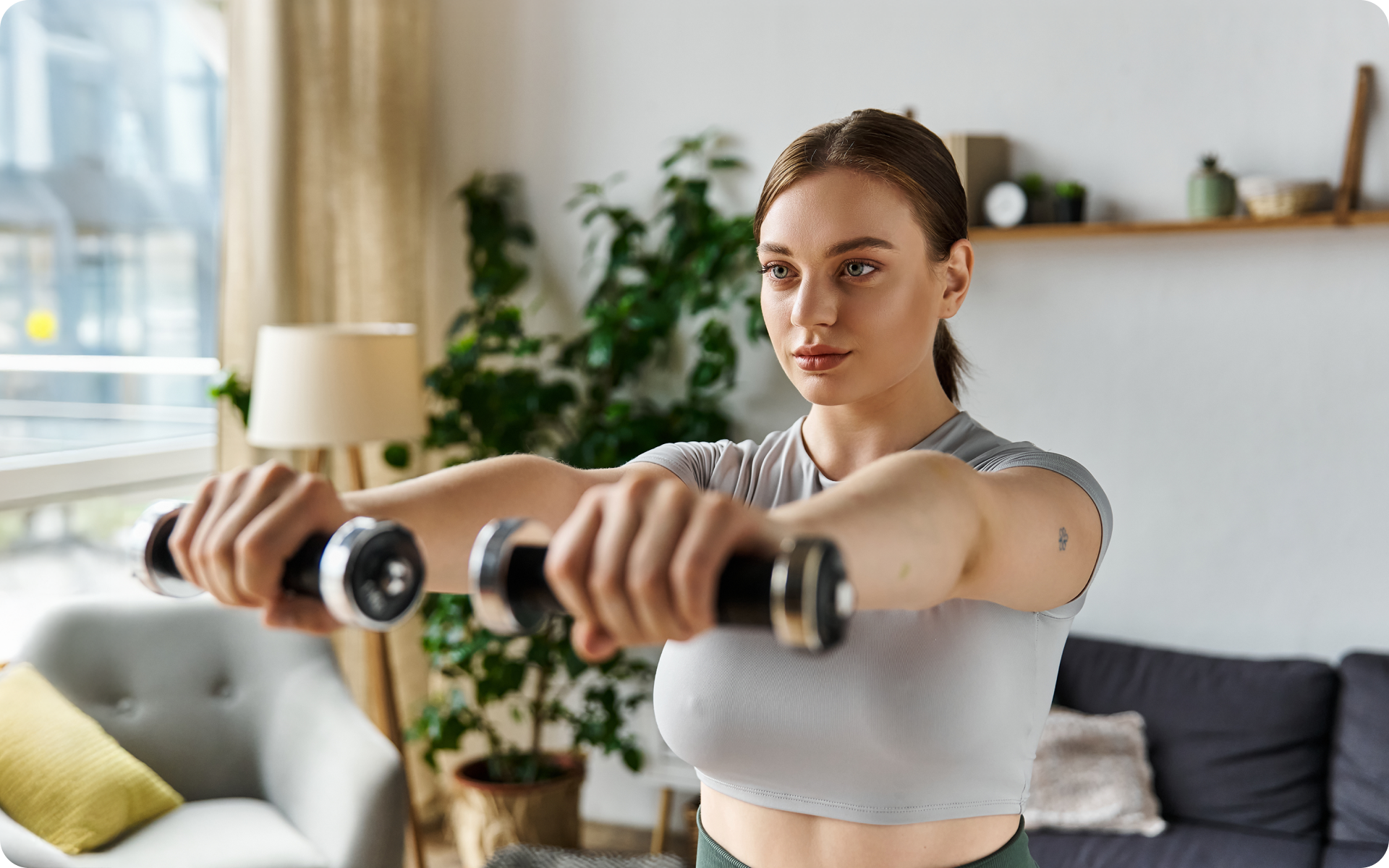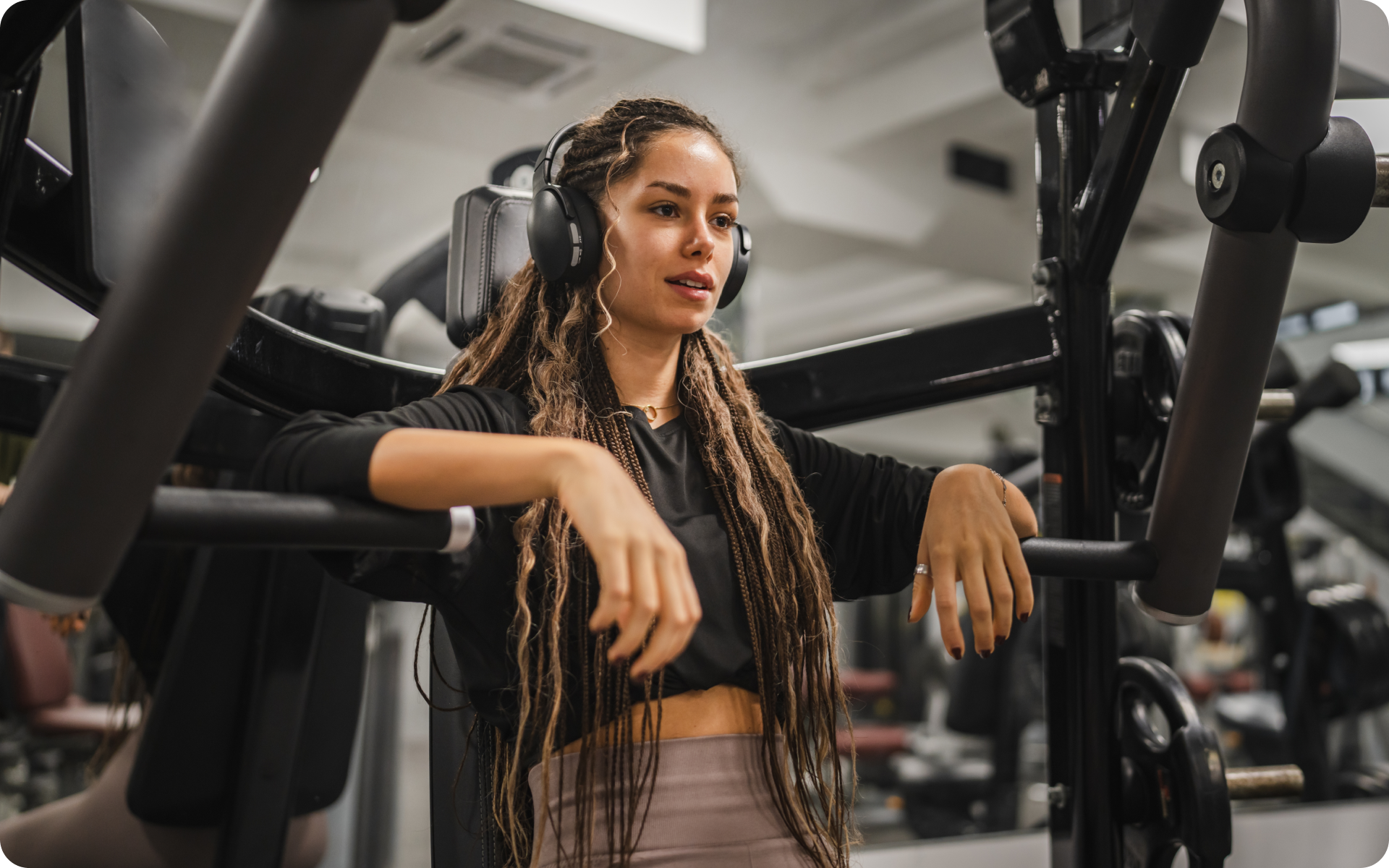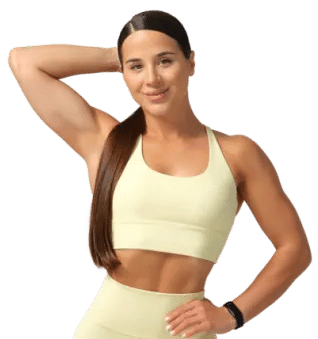You’ve decided to start working out at home. Maybe you don’t have the time to make it to the gym or you’re trying to save money on your monthly expenses. Whatever the reason, working out at home is a great way to get in shape and improve your overall health.
Wide-eyed and eager to start seeing results as quickly as possible, you decide to create a workout plan that gets you working out every day. While this may seem like the best way to get results fast, it’s actually not the most effective approach. In fact, working out too often can lead to burnout and decreased motivation.
That being said, there are ways to optimize your training week so you’ll still see results, without overdoing it.
In this article, we’ll give you a 7-day at-home workout plan that will help you make the most of your time and see the results you’re after.
Is It Okay to Exercise 7 Days a Week?
The short answer is: it depends. If you’re just starting or getting back into shape after a long break, then working out 7 days a week may be too much. Your body needs time to recover and if you push it too hard, you could end up overtraining or even injuring yourself.
While we don’t recommend working out every day at first, there are actually ways to make it work if you go for low-intensity workouts and focus on active recovery. We’ll get into that more later.
On the other hand, if you’re already in good shape and have worked out regularly for a while, you may be able to handle a 7 days a week workout plan – not for long, a few weeks at the most, but it can be done. Just make sure you give your body the time it needs to recover between workouts and don’t push yourself too hard.
Below are some situations where a 7-day workout plan may be beneficial:
- Athletes who are looking to improve their performance. Low-intensity to medium-intensity workouts will help them maintain their endurance without overtraining.
- People who have a lot of weight to lose. Working out more often can help increase the number of calories you burn each day, which will help you lose weight faster (1).
- People who are trying to gain a lot of muscle quickly. A higher volume of training (completing more sets and reps for each muscle group) can help you build muscle mass faster, but you shouldn’t stay on the 7-day routine for an extended period.
- People who want an endorphin boost every day. A moderate 7-day exercise routine can help improve your mood and mental state (3).
- People who are in maintenance mode. Once you’ve reached your fitness goals, a 7-day workout plan can help you maintain your results.
Below are some situations where a 7-day workout plan is NOT recommended:
- Beginners. Starting out with a 7-day workout plan is too much. Go for 3 to 4 days per week and gradually increase the frequency as you get more comfortable with working out.
- People who want to get progressively stronger. Increasing strength requires you to allow your body to recover between workouts. Lifting weights every day can lead to burnout and, ultimately, decreased strength gains.
- People who want sustainable hypertrophy (muscle-building) plans. Muscle growth requires adequate stimulus and rest. (10). Working out every day will lead to overtraining and decreased muscle growth.
The type of exercise you do is also an important consideration when you’re deciding whether or not to work out every day. If you’re doing high-intensity workouts, such as HIIT or CrossFit, it’s best to give yourself at least one day of rest in between sessions. This will help your body recover and prevent you from overtraining (2).
On the other hand, if you’re doing mostly low-intensity workouts, such as walking or yoga, working out every day may be fine. Just listen to your body and make sure you don’t push yourself too hard.
Reasons why BetterMe is a safe bet: a wide range of calorie-blasting workouts, finger-licking recipes, 24/7 support, challenges that’ll keep you on your best game, and that just scratches the surface! Start using our app and watch the magic happen.
When Can Beginners Work Out 7 Days a Week?
As a beginner, if you must work out 7 days a week, 4 days should be dedicated to low-intensity workouts (such as walking, yoga, or light cardio) and 3 days to higher-intensity workouts (such as HIIT, sprints, or lifting weights).
You should also consider the following factors:
- If your schedule allows 30 to 60 minutes per day to train
- If you’re getting enough sleep at night
- If you’re eating a balanced diet
If you can answer yes to all of the above, then working out 7 days a week should be fine – just make sure your workouts aren’t overly strenuous.
However, for beginners, we recommend working out 3 to 4 times per week. This will give your body time to adjust to the new activity and prevent you from overtraining. As you become more comfortable with working out, you can gradually increase the frequency to 5 to 6 times per week.
Once you’re used to working out 5 to 6 times per week, you can start adding the 7th day if you want. Just make sure you don’t push yourself too hard and you give your body the time it needs to recover between workouts.
What Is the Best 7-Day Workout for Beginners?
If you’re looking to get the most out of your 7-day workout plan at home, we recommend a combination of high-intensity and low-intensity workouts.
You’ll need some equipment; a mat, resistance bands of different levels, yoga blocks, and a light set of dumbbells. Wear some workout clothes you feel comfortable in and choose proper footwear for cardio workouts.
Day 1: 30-Minute Walk
Walking is an underrated form of cardio. Not only does it help improve your cardiovascular health, it helps boost your mood and energy levels too. In addition, walking can be beneficial for your knee joints (9).
To get the most out of your walk, aim to walk at a brisk pace for 30 minutes. You should be able to talk, but you shouldn’t be able to sing. If you need some motivation to keep going, try listening to an audiobook or podcast.
While walking, make sure you focus on good form. Stand up straight with your shoulders back and your core engaged. Swing your arms as you walk, and be sure to land on your heel before rolling through to your toes.
Day 2: Pilates for Beginners
Pilates is an excellent workout for beginners as it’s low-impact and can be done at home with little or no equipment. Some of the benefits of Pilates include improved flexibility, better posture, and a stronger core (5).
Beginners can start with a basic Pilates routine that focuses on the core muscles.
Here are some of the best Pilates exercises for beginners:
The Hundred
- Lie on your back with your legs in the air and your knees bent at 90 degrees.
- Place your hands on the mat beside you with your palms down.
- Engage your core muscles and lift your head and shoulders off the mat.
- Pump your arms up and down for 100 counts.
The Single-Leg Circle
- Lie on your back with both legs in the air and your knees bent at 90 degrees.
- Place your right hand on the mat beside you and extend your left leg straight up toward the ceiling.
- Use your abs to slowly lower your left leg down toward the floor, then circle it around to the right before bringing it back up to the starting position.
- Repeat 10 times, then switch sides and repeat with your right leg.
The Criss Cross
- Lie on your back with both legs in the air and your knees bent at 90 degrees.
- Place your right hand behind your head and reach your left arm across your body to touch your right knee.
- Using your abs, twist your torso to the right and bring your right knee toward your left shoulder while keeping your head and shoulders off the mat.
- Return to the starting position, then repeat on the other side.
Read more: Indoor Cycling Workout Plan – A Dynamic Program for Every Rider
Day 3: Full-Body Strength Training
Strength training is important for both men and women. Not only does it help build muscle, it can also help improve bone density, increase metabolism, and reduce body fat (6).
For this workout, you’ll need a set of dumbbells (5 to 10 pounds is a good starting point if you’re new to strength training) and a mat. If you don’t have dumbbells, you can use soup cans or water bottles as makeshift weights. Wall push-ups are also a good exercise to try.
The following are some basic full-body strength-training exercises that are perfect for beginners:
Dumbbell Chest Press
- Lie on your back on a mat with your knees bent and your feet flat on the floor.
- Hold a dumbbell in each hand and position them beside your chest with your palms facing forward.
- Press the dumbbells up toward the ceiling, then slowly lower them back down to the starting position.
- Repeat 10 to 12 times.
Dumbbell Squat
- Stand with your feet shoulder-width apart and hold a dumbbell in each hand, with your palms facing your thighs.
- Engage your core muscles and squat down until your thighs are parallel to the floor.
- Make sure to keep your knees tracking over your midfoot and push your hips back as you lower down.
- Push through your whole foot to return to the starting position.
- Repeat 10 to 12 times.
Dumbbell Row
- Position a dumbbell on the floor beside you and stand with your feet shoulder-width apart.
- Bend at your hips and knees and lower your torso until it’s parallel to the floor.
- Grasp the dumbbell with your right hand and row it up to the side of your chest.
- Lower it back down to the starting position, then repeat with your left arm.
- Repeat 10 to 12 times on each side.
Dumbbell Shoulder Press
- Sit on a mat with your knees bent and your feet flat on the floor.
- Hold a dumbbell in each hand at shoulder level with your palms facing forward.
- Press the dumbbells up toward the ceiling, then lower them back down to the starting position.
- Repeat 10 to 12 times.
Bent-Over Dumbbell Triceps Extension
- Stand with your feet shoulder-width apart and hold a dumbbell in each hand.
- Bend at your hips and lower your torso until it’s almost parallel to the floor.
- Allow your arms to hang straight down from your shoulders, then extend your elbows to curl the dumbbells up toward your shoulders.
- Lower them back down to the starting position and repeat.
- Repeat 10 to 12 times.
Dumbbell Split Squat
- Stand with your feet hip-width apart and hold a dumbbell in each hand with your palms facing your thighs.
- Step forward with your left leg and lower your body until both knees are bent at approximately 90 degrees.
- Position your front knee so it is above your ankle.
- Press through your heel to return to the starting position, then repeat with your right leg.
- Repeat 10 to 12 times on each side.
Day 4: Cardio Dance Workout
After a day of strength training, you’ll want to do some cardio to help boost your heart rate and burn calories (8). Dancing is a great way of getting your cardio in while also having some fun.
For this workout, all you need is some space to move around and some upbeat music. You can find some great cardio dance workouts on YouTube or make your own routine. Just make sure to keep your heart rate up and your form on point.
Day 5: HIIT Workout
HIIT, or high-intensity interval training, is a type of workout that alternates between short bursts of intense activity and periods of rest or low-intensity activity. HIIT has been proven to be incredibly effective for burning fat and increasing cardio endurance (4).
For this workout, you’ll need a timer and some space to move. You can do this exercise either outdoors or indoors.
To start, warm up with some light cardio for 5 minutes. Then, start your timer and do as many rounds of the following circuit as you can in 20 minutes:
- 30 seconds of jump squats
- 30 seconds of mountain climbers
- 30 seconds of burpees
- 30-60s seconds of rest
Day 6: Full Body Resistance Band Workout
Resistance bands are an excellent way to get a full-body workout without any equipment. They’re also incredibly versatile and can be used for a variety of exercises. For this workout, you’ll need a resistance band and some space to move. You can do this exercise either outdoors or indoors.
Start with a 5-minute warm-up of light cardio. Then, perform the following circuit 2 to 3 times:
- 10 squats
- 10 lunges (each leg)
- 10 pushups
- 10 rows (each arm)
- 10 shoulder presses (each arm)
Day 7: Full Body Yoga Stretch
Stretching is an important part of any workout routine. It helps improve flexibility and can prevent injuries. Yoga is a great way of stretching your whole body and relaxing your mind (11).
For this workout, you’ll need a yoga mat and some space to move. Below are some basic yoga stretches that will help stretch your entire body. You can hold each stretch for 30 seconds to 1 minute.
Child’s Pose
- Start on your hands and knees with your palms flat on the mat and your shoulders over your wrists.
- Sit back on your heels, then walk your hands forward until your forehead touches the mat.
- Extend your arms out in front of you.
- Relax your whole body and breathe deeply.
Downward Dog
- Start on your hands and knees with your palms flat on the mat and your shoulders over your wrists.
- Tuck your toes under and lift your hips up and back until your thighs are parallel to the mat and your body forms an inverted V-shape.
- Keep your core engaged and your breath steady.
Bridge Pose
- Lie on your back with your knees bent and your feet flat on the floor.
- Place your arms at your sides with your palms down.
- Lift your hips off the floor until your thighs and torso are in line with each other.
- Hold for 30 seconds to 1 minute, then lower your hips back to the floor.
Savasana
- Lie on your back with your legs straight and your arms at your sides with your palms up.
- Close your eyes and focus on deep breathing.
- Relax your whole body and clear your mind.
- Stay in this pose for 5 minutes or longer.
BetterMe app will provide you with a host of fat-frying fitness routines that’ll scare the extra pounds away and turn your body into a masterpiece! Get your life moving in the right direction with BetterMe!
7-Day Diet to Lose Pounds
Together with a 7-day at-home workout routine, it’s important to follow a healthy and balanced diet to reach your fitness goals. Here is an example of a 7-day diet plan to lose 10 pounds that focuses on whole foods and proper portion sizes to help you lose pounds.
Day 1
- Breakfast: avocado toast with scrambled eggs
- Snack: apple slices with almond butter
- Lunch: grilled chicken salad with quinoa and mixed vegetables
- Snack: Greek yogurt with berries
- Dinner: baked salmon with roasted sweet potatoes and broccoli
Day 2
- Breakfast: oatmeal with almond milk, chia seeds, and fresh fruit
- Snack: carrot sticks with hummus
- Lunch: turkey and cheese wrap with whole-wheat tortilla, lettuce, and tomato
- Snack: a handful of almonds
- Dinner: quinoa stir-fry with tofu and mixed vegetables
Day 3
- Breakfast: smoothie bowl with spinach, banana, almond milk, and protein powder
- Snack: celery sticks with peanut butter
- Lunch: whole-grain pasta with lean ground turkey and marinara sauce
- Snack: a hard-boiled egg
- Dinner: grilled chicken breast with roasted vegetables and brown rice
Day 4
- Breakfast: Greek yogurt parfait with granola and fresh berries
- Snack: edamame beans
- Lunch: whole-wheat wrap with black beans, avocado, and salvsa
- Snack: protein shake with almond milk and banana
- Dinner: baked fish with quinoa and steamed vegetables
Day 5
- Breakfast: whole-grain toast with avocado, smoked salmon, and scrambled eggs
- Snack: hummus with whole-wheat pita chips
- Lunch: grilled chicken Caesar salad with homemade dressing
- Snack: cottage cheese with fresh fruit
- Dinner: turkey meatballs with zucchini noodles and marinara sauce
Day 6
- Breakfast: egg white omelet with spinach, mushrooms, and feta cheese on whole-grain toast
- Snack: a handful of cashews
- Lunch: whole-wheat wrap with grilled chicken, lettuce, tomato, and avocado spread
- Snack: fresh fruit smoothie with protein powder
- Dinner: baked tofu with quinoa and roasted vegetables
Day 7
- Breakfast: whole-grain pancakes with fresh berries and Greek yogurt
- Snack: cucumber slices with hummus
- Lunch: turkey and cheese sandwich on whole-wheat bread with mixed greens and mustard
- Snack: protein bar
- Dinner: grilled shrimp with brown rice and steamed vegetables
Note: Remember to drink plenty of water throughout the day and listen to your body’s hunger cues. If you’re still hungry, add an extra snack or increase portion sizes. How much you eat will be dependent on your individual needs and activity level.
Read more: Is a 7 Day Workout Plan The Best Choice For You?
FAQs
Is it better to work out 7 days a week or 5 days a week?
It’s better to work out 5 days a week and have 2 rest days for recovery. Your body needs time to repair and rebuild muscle after intense workouts, so taking breaks is important. However, if you prefer to work out every day, make sure you vary the intensity of your workouts and listen to your body’s signals for rest or recovery days.
Do bodybuilders train 7 days a week?
Some bodybuilders train 7 days a week, but this is not recommended for the majority of people. Bodybuilders typically have a strict training schedule and diet plan in order to achieve their specific goals.
Therefore, their training frequency may vary from person to person. It’s important to consult a professional trainer or doctor before committing to a rigorous 7-day workout schedule.
Will I gain muscle if I work out every day?
Yes, working out every day can help you gain muscle, but it’s important to have proper rest and recovery days in between workouts, in addition to maintaining proper nutrition.
Muscles need time to repair and grow, so working out every day without allowing for recovery may hinder your progress in the following ways: increased risk of injury, fatigue and decreased performance in workouts, and potential overtraining syndrome. Listen to your body and give it the rest it needs in order to see optimal results.
Can a beginner work out 7 days a week?
A beginner shouldn’t jump into a 7-day workout routine immediately. It’s important to gradually increase the intensity and frequency of workouts in order to prevent injury and burnout. Starting with 3-4 days of exercise per week and building up from there is a more reasonable approach for beginners.
The Bottom Line
Working out 7 days a week isn’t advisable for most beginners and it’s important to give your body time to recover between workouts. However, if you have the time and energy, there are a variety of workouts you can do at home that will provide quick results – just make sure you listen to your body and take breaks when you need to.
DISCLAIMER:
This article is intended for general informational purposes only and does not serve to address individual circumstances. It is not a substitute for professional advice or help and should not be relied on for making any kind of decision-making. Any action taken as a direct or indirect result of the information in this article is entirely at your own risk and is your sole responsibility.
BetterMe, its content staff, and its medical advisors accept no responsibility for inaccuracies, errors, misstatements, inconsistencies, or omissions and specifically disclaim any liability, loss or risk, personal, professional or otherwise, which may be incurred as a consequence, directly or indirectly, of the use and/or application of any content.
You should always seek the advice of your physician or other qualified health provider with any questions you may have regarding a medical condition or your specific situation. Never disregard professional medical advice or delay seeking it because of BetterMe content. If you suspect or think you may have a medical emergency, call your doctor.
SOURCES:
- 6-Week Weight Loss Home Workout Plan for Women (2023,shape.com)
- Effects of Consecutive Versus Non-consecutive Days of Resistance Training on Strength, Body Composition, and Red Blood Cells (2018,nih.gov)
- Exercise for Mental Health (2006,nih.gov)
- High-Intensity Intermittent Exercise and Fat Loss (2011,nih.gov)
- Pilates (2011,nih.gov)
- Resistance training is medicine: effects of strength training on health (2012,nih.gov)
- The benefits of adding cross training to your exercise routine (2018,canr.msu.edu)
- The (Many) Benefits of a Cardio Workout (2020,nih.gov)
- The Association Between Walking for Exercise and Symptomatic and Structural Progression in Individuals With Knee Osteoarthritis: Data From the Osteoarthritis Initiative Cohort (2022, acrjournals.onlinelibrary.wiley.com)
- The mechanisms of muscle hypertrophy and their application to resistance training (2010,nih.gov)
- Yoga – health benefits (2022,betterhealth.vic.gov.au)

